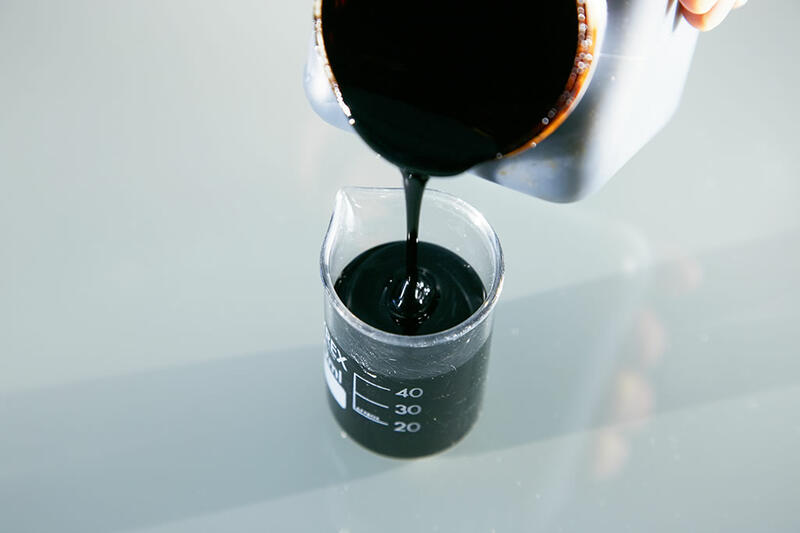
Services
Testing Laboratory
Qualification of black liquors
Physical and chemical analyses
Helping our clients comprehend and process black liquors by offering pertinent physical and chemical analyses for energy recovery and extraction of co-products (CTO, lignins, etc.).
General informations
The Centre Technique du Papier has developed expertise in characterising and recovering energy from black liquors produced by the papermaking industry.The CTP’s “Chemical Analysis” and “Effluent” laboratories and Intechfibres team draw on this industrial experience and the knowledge they have acquired through R&D projects to perform a large number of tests on black liquor.
The tests are performed according to protocols developed internally and standards (ISO, SCAN, TAPPI and ASTM, etc.).
Technical Data and Achievements
Black liquors are characterised using methods developed at the CTP and according to ISO, SCAN and TAPPI standards.
Physical and chemical characterisation of black liquors
- Measurement of density with a pycnometer
- Measurement of viscosity on a Brookfield LVF viscometer at 20°C & 70°C and at 100 rpm
Solid content according to TAPPI T-650. - Measurement of pH on a calibrated pH meter
- REA (residual effective alkali) content according to a modified version of TAPPI method T 625 cm-85, without formaldehyde
- Hot dilution of samples according to SCAN N-37, section 6
- Quantitative analysis of chlorides, sulphates, sulphites and thiosulphates by ion chromatography.
- Quantitative analysis of carbonates by measurement of TIC according to SCAN-N32 Appendix A.
- Determination of carbon, hydrogen, oxygen, nitrogen and sulphur content by elemental analysis
- Quantitative analysis of dry silicon by ICP spectrometry after mineralisation by alkaline fusion.
- Quantitative analysis of sodium and potassium by ICP spectrometry.
- Sulphide ions (HS-/S2-) content according to the SCAN-N 31:94 method: potentiometric titration using a specific silver combination electrode
(Ag/AgCl). - Quantitative analysis of hydroxyl ions according to TAPPI T 625 cm-85 - section 5.8 (active alkali, NaOH + Na2S) by pH-metric titration with hydrochloric acid. Results expressed as % NaOH.
- Mineral matter content (or ash content at 525°C and/or 900°C) according to the principle of Tappi T 625cm-85.
Energy recovery from black liquor:
- Evaluation of Gross Calorific Value (GCV) using the bomb calorimeter method and calculation of Net Calorific Value (NCV) according to NF ISO 1928.
Potential of black liquor co-products
- Assessment of the potential for CTO (Crude Tall Oil) or soaps by GC/FID titration of the extractable composites (fatty acids, resin acids, lignans, sterols, steryl esters and triglycerides) after solvent extraction.
- Assessment of the potential for CST (crude sulphate turpentine) or turpentine by GC/FID-MS titration of the main volatile terpenes (pinene,
carene, limonene, etc.) using the principle of ASTM method D6387-99. - Assessment of the potential for precipitable lignin by measurement of the AIL (or Klason) and ASL (acid-soluble) lignin content, using the principle of ISO- CD 21 436.
- Lignin production and qualification tests.
 |
Also to be seen
Consultancy Diagnosis
Centre of Excellence
Testing Laboratory